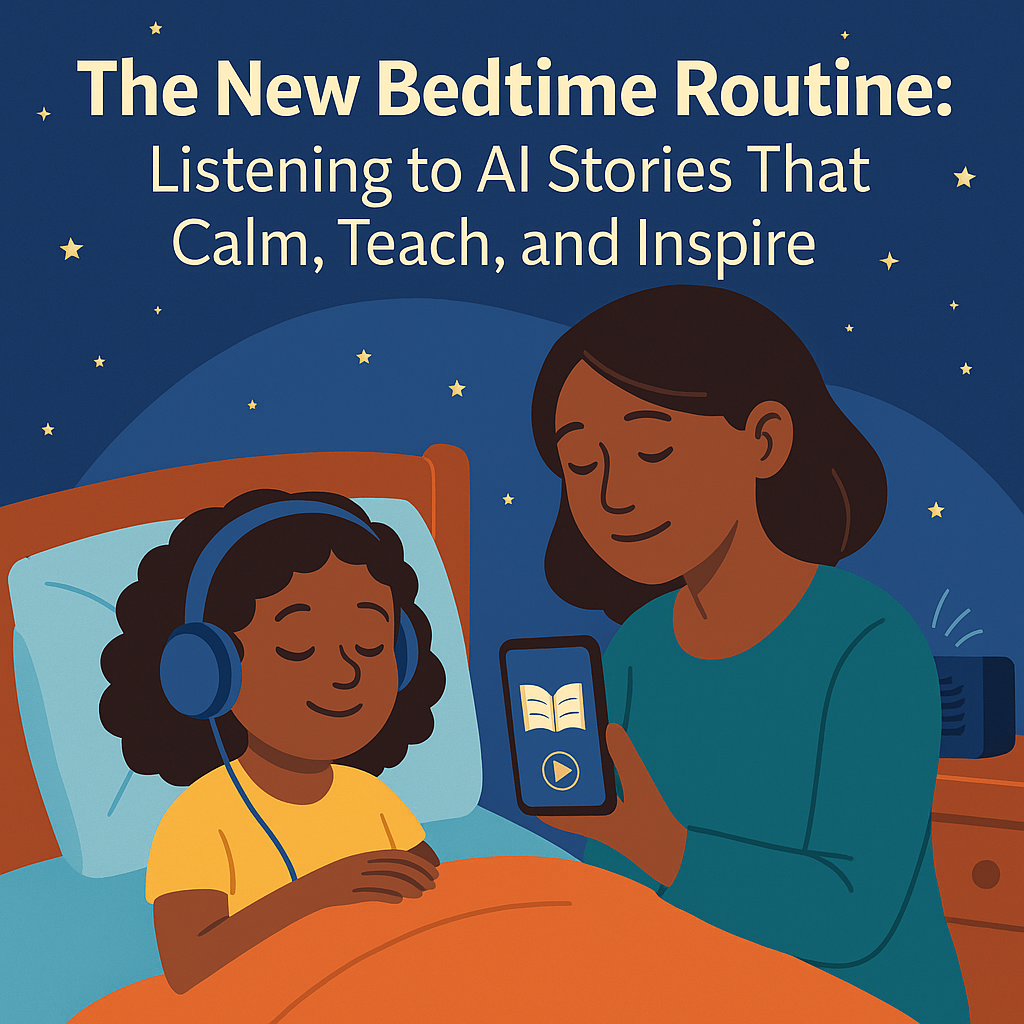Quick Guide: Swap late-night scrolling for a gentle, audio-first story ritual. With StoryWeaver and a five-step routine, kids wind down faster while learning through imagination—screen-light and stress-light.
1) Why audio-first bedtime stories work
- Less stimulation: Audio allows the screen to stay off, reducing blue light and late-night arousal.
- Imagination over input: Children picture scenes in their minds, strengthening creativity and memory.
- Predictable routine: Repeating the same sequence each night signals "time to rest."
- Bonding: Co-listening and short reflections create calm connection moments.
2) The five-step routine (HowTo)
- Wind Down (3 min): Dim lights, tidy toys, and set your phone to Do Not Disturb.
- Choose (1 min): Let your child pick a theme (animals, adventures, kindness, space).
- Listen (8–10 min): Play on a speaker at low volume; pause if you notice questions.
- Reflect (1 min): Ask one question: "How did the hero solve the problem?"
- Lights Out (0–1 min): Close with a simple affirmation: "You are safe. You are loved. Good night."
3) Starter themes
- Calm Adventures: Low-conflict quests with soft endings, perfect for winding down.
- Kindness & Empathy: Stories with choices that model helping others and friendship.
- Animals & Nature: Gentle stories about wildlife, farms, and outdoor adventures.
- Space & Wonder: Peaceful cosmic journeys that spark curiosity without overstimulation.
Tip: Create a "Bedtime Favorites" collection with 3–5 stories your child knows and loves.
4) Learning during storytime
- Vocabulary: Repeat favourite episodes; ask for synonyms after the story.
- Values: Short debriefs on courage, kindness, patience help reinforce positive behavior.
- Listening skills: Encourage kids to predict endings before choices are revealed.
- Cultural awareness: Explore stories with diverse settings and characters from around the world.
5) Parent tips for smoother nights
- Keep stories consistent on school nights; save "long stories" for weekends.
- Use a bedside speaker to avoid holding a phone and minimize screen exposure.
- If a story feels too exciting, switch to a calmer theme and lower volume slightly.
- Avoid food/sugar within 45 minutes of bedtime; water is fine.
- For siblings, use stereo speakers and sit between beds to share the moment.
FAQ
- Can we keep the screen off?
- Yes—StoryWeaver stories work great as audio experiences. Once the story starts, you can turn your phone screen off or use a speaker.
- How long should the story be?
- For most children, 8–10 minutes is plenty on school nights. Repeat short favourites instead of one long episode to maintain the calming routine.
- Does this replace reading print books?
- No—think of audio stories as a relaxing complement to reading. Keep reading together during the day or on weekends for variety.
- Will this reduce screen time?
- Yes—Stories are audio-first and children listen and imagine, rather than watch a bright screen. This helps reduce blue light exposure before bed.
- Are the stories safe and age-appropriate?
- StoryWeaver is designed for children ages 3-12 with age-appropriate content. You can select themes that match your child's age and interests.
- Can we use it for language learning?
- While StoryWeaver's primary narration is in English, repeating stories helps reinforce vocabulary, pronunciation, and listening comprehension skills.
Related reading:
- How AI Is Changing Storytelling for Children
- Behind the Scenes: How StoryWeaver Uses GPT
- How to Use StoryWeaver for Classroom Storytelling
- View StoryWeaver pricing plans
Disclaimer: This article is for general wellness guidance and family routines. It is not medical advice.
← Back to Blog